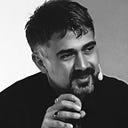A Brief Overview of Popular Theories of Consciousness
The question “What is consciousness?” is becoming increasingly relevant in the age of AI — one of the last great mysteries that may never be solved.
Consciousness is like trying to nail jelly to a wall — the more you think you’ve got it, the more it slips away. Philosophers and scientists, in their infinite wisdom and equally infinite confusion, have offered an array of theories.
Materialism
This is the “brain is all you need” camp. Materialists assert that consciousness is purely a product of physical processes in the brain. Think of the brain as a complex computer; consciousness arises when the circuits (neurons and synapses) run. It’s the idea that all our thoughts, feelings, and experiences can be explained by the dance of atoms in our skulls. This theory is grounded in physical science, advocating that everything about consciousness can, in principle, be measured and understood like any other physical phenomenon.
Representatives:
Francis Crick: Renowned for co-discovering the structure of DNA, Crick also ventured into the realm of consciousness. In his later years, he focused on neuroscience and proposed that consciousness arises solely from neural networks in the brain.
Daniel Dennett: A contemporary philosopher and cognitive scientist, Dennett argues for a materialist view in his book “Consciousness Explained.” He posits that consciousness results from physical processes in the brain without needing non-material explanations.
Dualism
Enter René Descartes, the philosopher who essentially said, “I think, therefore, I am somewhere else.” Dualism posits that the mind and the body are two distinct substances. The body is physical, playing by the rules of physics, but the mind (or soul, if you will) is non-physical and operates on another plane. It’s like saying your mind is the driver, and your body is the car. They work together, but they’re fundamentally different things. This view has its roots in religious and philosophical traditions, emphasizing a separation between the material and the spiritual.
Representatives:
René Descartes: The poster boy for Dualism, Descartes famously theorized that the mind and body are distinct and separate entities. His statement, “Cogito, ergo sum” (I think, therefore I am), underscores his belief in the importance of consciousness.
John Eccles: A Nobel Prize-winning neurophysiologist, Eccles supported a form of dualism. He believed in separating the mental world (of thoughts and consciousness) from the physical world (of brain matter).
Panpsychism
This theory is like saying consciousness is a universal ingredient, like salt in the sea. Proponents of panpsychism argue that all matter, not just brains, has some form of consciousness or mental properties. Not that your coffee cup ponders its existence, but that consciousness is a fundamental feature of the universe, present even in the tiniest particles. This view tries to bridge the mental and physical gap by spreading a thin layer of mind-stuff over everything.
Representatives:
Baruch Spinoza: Though not a panpsychist in the strict sense, Spinoza’s philosophy suggested a universe where everything is interconnected, hinting at a proto-panpsychist view.
David Chalmers: A leading philosopher in the study of consciousness, Chalmers has entertained the idea of panpsychism as a potential solution to the complex problem of consciousness, suggesting that conscious experience might be a fundamental property of all matter.
Quantum Mind
This is where things get sci-fi. Some theorists, like Roger Penrose, suggest that classical physics can’t explain consciousness, so we must turn to quantum mechanics — the rules governing the very small. They propose that quantum processes in the brain contribute to the generation of consciousness. It’s a bit like suggesting there’s a quantum orchestra playing in our neurons, and consciousness is the music it produces.
Representatives:
Roger Penrose: A physicist and mathematician, Penrose, in collaboration with anesthesiologist Stuart Hameroff, proposed the Orch-OR theory. This theory suggests that quantum processes in brain microtubules are essential for consciousness.
Stuart Hameroff: As mentioned above, Hameroff’s collaboration with Penrose placed him at the forefront of the quantum mind theory, linking consciousness to quantum mechanics in the brain.
Consciousness as an Illusion
Last but not least, some philosophers and cognitive scientists argue that consciousness is a trick. According to this view, what we experience as consciousness is the brain’s way of making sense of the various neural processes inside our heads. It’s like the brain’s internal PR department, creating a coherent story from disparate information. This theory challenges the very existence of consciousness as we typically understand it, suggesting that what we think of as our inner life is just a sophisticated narrative spun by the brain.
Representatives:
Paul Churchland: A philosopher known for his work in neuro philosophy and the philosophy of mind, Churchland has argued that what we consider consciousness might be explained entirely by physical processes in the brain, effectively rendering it an “illusion” or a misinterpreted concept.
Daniel Wegner: A psychologist famous for his work on the illusion of conscious will, Wegner suggested that our sense of free will and conscious intentionality are illusions, with the actual causal mechanisms being unconscious processes.
Each of these theories tries to unravel the enigma of consciousness uniquely. It’s like having different maps for the same territory, highlighting different landmarks and paths, yet none can fully capture the terrain’s mysterious essence. Consciousness remains one of the great puzzles, a tantalizing mirage in the desert of our understanding.
Murat
